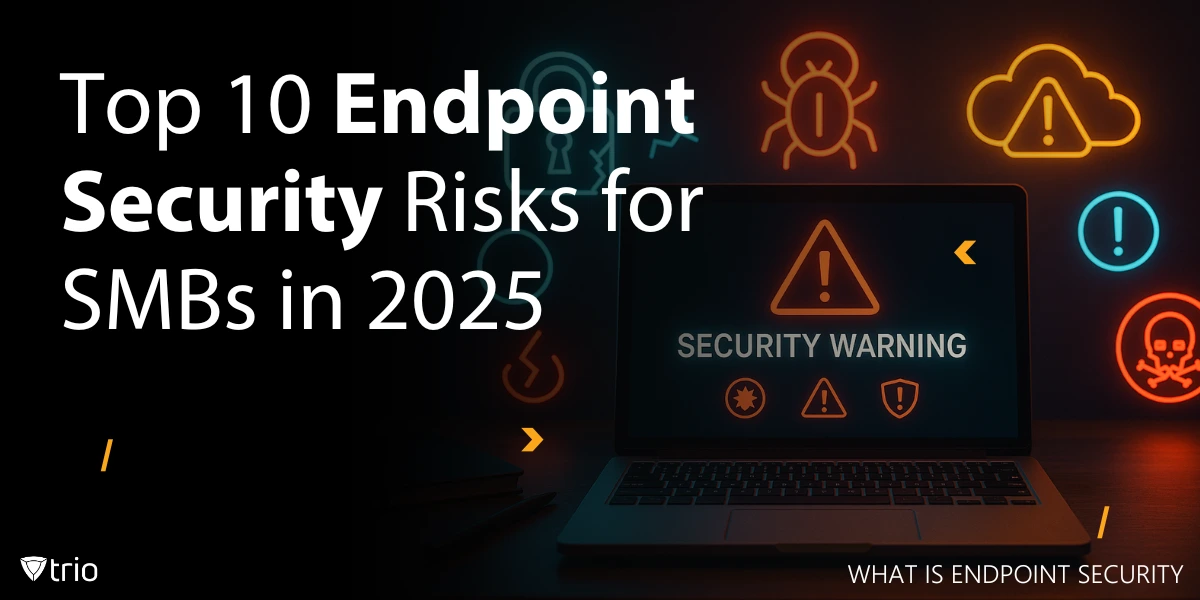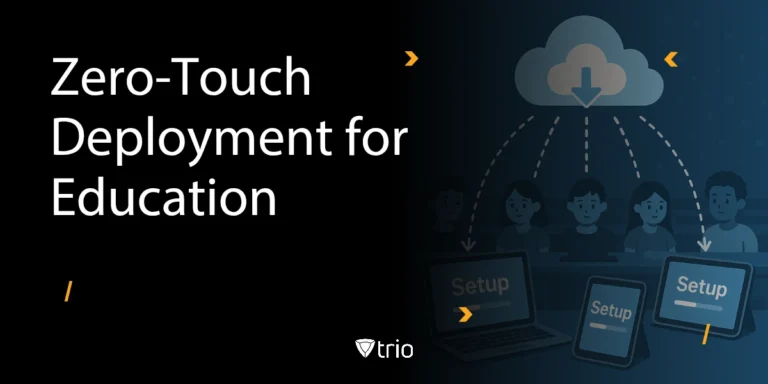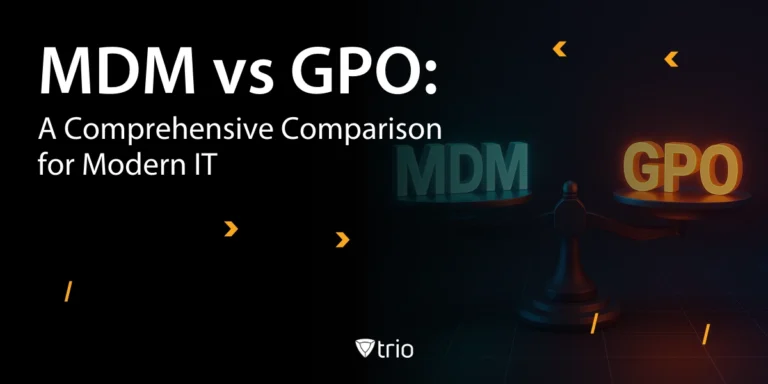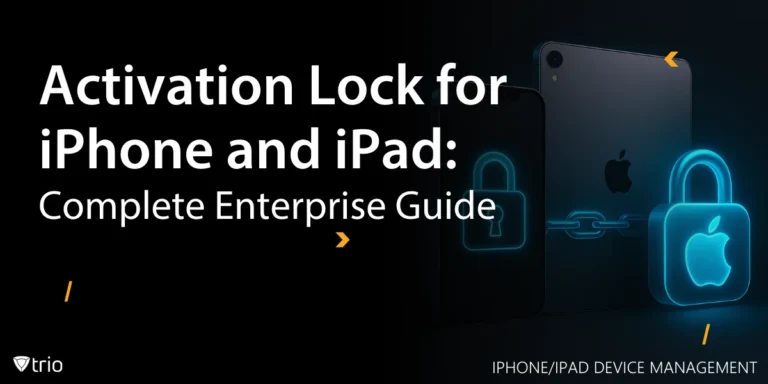In 2024, Sophos reported that fileless attacks, credential theft, and abuse of legitimate IT tools (LOLBins) reached record highs, with threat actors increasingly avoiding traditional malware. In one case, attackers used remote monitoring and management (RMM) software, tools meant to assist IT support, to quietly control and extract data from corporate systems without deploying a single malicious file. These stealthy intrusions are now common, often bypassing detection and spreading across hybrid networks.
The implication for 2025 is clear: endpoint threats are no longer just about malware. They involve malware-free attacks, stolen credentials, AI-generated phishing scams, and supply chain code injection, all of which exploit the distributed, device-heavy nature of the modern workplace.
For small and mid-sized businesses (SMBs), where IT teams are often stretched thin, this creates a dangerous mix. Remote workers, BYOD policies, and unsanctioned SaaS apps all contribute to expanding attack surfaces. Without centralized control, shadow IT endpoints and BYOD ransomware vectors slip through the cracks.
This is why endpoint security must evolve. Mobile Device Management (MDM) platforms like Trio are no longer optional, they’re essential. MDM provides visibility, automated patching, and policy enforcement across every device, no matter where it's located.
This article will break down the top endpoint security risks in 2025, explore real-world threat tactics, and offer actionable steps for SMB IT teams to strengthen their endpoint defenses.
The 2025 Threat Landscape: What’s New?
Today’s threat actors don’t just rely on traditional malware. They exploit zero-day vulnerabilities, weaponize advanced persistent threats (APTs), and launch malware-free attacks that are nearly invisible to legacy antivirus tools.
At the same time, phishing techniques are evolving. With generative AI, cybercriminals are crafting hyper-personalized AI-generated phishing scams that can bypass even trained employees. These tactics leverage psychological manipulation and real-time behavioral data to breach systems, often through endpoints.
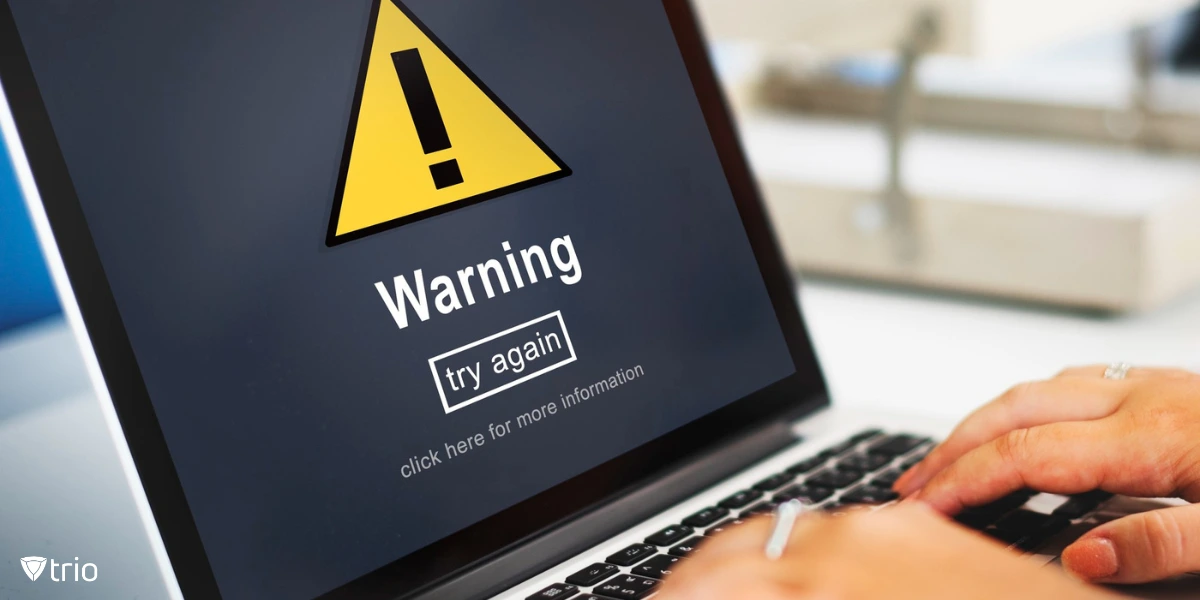
Top Endpoint Risks #1–3: Access and Identity
1. Phishing and Credential Theft
Phishing remains the entry point for most breaches. In 2025, attackers are combining AI with social engineering to trick users into revealing credentials, undermining even strong password policies. Solutions like endpoint phishing simulation and continuous authentication zero trust are becoming essential to prepare users and limit exposure.
2. Insider Threats
Whether malicious or accidental, insiders continue to pose major risks. Poor access control, excessive permissions, and unsecured devices increase the chances of data leaks or sabotage. Insider threat prevention programs fueled by monitoring, education, and strict policy enforcement are a must.
3. Lateral Movement
Once inside, attackers often move laterally across a network by exploiting weak authentication methods. Lateral movement detection tools combined with ZTNA Integration can limit their scope and help isolate the threat.
Top Risks #4–6: Software Vulnerabilities
4. Unpatched Systems
An unpatched software endpoint threat remains one of the easiest ways for attackers to compromise a device. Many SMBs struggle with a consistent vulnerability management cycle due to limited resources. Investing in secure remote patching tools can dramatically shorten your mean time to patch and improve your endpoint compliance monitoring metrics.
5. Fileless and Memory-Resident Malware
Traditional antivirus solutions are often ineffective against fileless malware attacks. These threats reside in memory, making fileless malware defense a key pillar of any modern endpoint EDR/XDR stack.
6. Zero-Day and Supply Chain Attacks
Supply chain code injection attacks are harder to detect and usually bypass perimeter defenses. Partnering with trusted vendors and using ZTNA Solutions can help reduce your exposure to these high-impact threats.
Top Risks #7–8: Ransomware and Data Loss
7. Ransomware Targeting Individual Devices
Modern ransomware attacks target isolated endpoints, especially in BYOD or remote work environments, encrypting data and demanding payment before backup systems can respond. Encrypted endpoint storage and rapid restoration protocols are essential for defense.
8. Data Loss and DLP Failures
Endpoint DLP failure often occurs when endpoints fall outside IT visibility or data is not properly encrypted. Data exfiltration can happen through compromised applications or even copy-paste into shadow IT endpoints.
Top Risks #9–10: Visibility and Compliance
9. Shadow IT and Unsanctioned SaaS
Employees often adopt tools without IT approval, leading to shadow SaaS usage that can harbor vulnerabilities and compliance risks. Visibility into these services is crucial for maintaining a strong endpoint security posture score.
10. Visibility Gaps
Endpoint visibility gaps make it difficult to identify unusual behavior or early signs of compromise. Tools that support endpoint anomaly detection and endpoint EDR/XDR stack integrations help close these gaps and ensure faster responses.
Frameworks and Best Practices for SMBs
To build resilience against evolving endpoint threats, SMBs should follow structured, battle-tested frameworks such as Zero Trust Architecture and layered security models. Here’s how to get started:
1. Embrace an Endpoint Zero Trust Strategy
Rather than trusting any device or user by default, Zero Trust assumes that all endpoints could be compromised. Key components include:
- ZTNA Integration for device-aware access
- Continuous authentication zero trust to monitor ongoing behavior
- Micro-segmentation to isolate threats and limit movement
2. Implement Layered Defense
Layered security involves placing controls across multiple layers: device, user, application, and network. This reduces the chance that a single failure results in a full breach. Tools like endpoint EDR/XDR stack, secure remote patching, and fileless malware defense are key here.
3. Strengthen Visibility and Metrics
Track key KPIs such as:
- Endpoint security posture score
- Mean time to detect (MTTD)
- Patch cycle lag
- Endpoint compliance monitoring rate
These help gauge how well your defenses are working and guide investment decisions.
4. Leverage MDM for Policy and Response Automation
Modern MDM platforms, like Trio, empower SMBs to manage endpoint policies, automate compliance, enforce encryption, and gain visibility across remote and mobile devices. MDM ensures that vulnerability management cycles are executed consistently, even in highly distributed environments.
How MDM Solutions Like Trio Strengthen Endpoint Defense
As mentioned before, one of the most efficient ways to improve endpoint security is by deploying a modern MDM solution like Trio. Trio enforces consistent policy application, enables secure remote patching, and supports encrypted endpoint storage, even across remote and BYOD devices.
For SMBs managing distributed teams and hybrid environments, MDM tools offer the automation and scalability needed to enforce a strong endpoint zero trust strategy.
Request a Free Demo of Trio MDM Now and take the first step toward a secure endpoint environment in 2025.
Final Thoughts
As we move deeper into 2025, endpoint threats are evolving faster than ever. From unpatched software endpoint threats to insider threat prevention failures, it is clear that endpoint security must be proactive and comprehensive. With frameworks like Zero Trust and tools like Trio MDM, SMB’s IT teams can build a strong defense, reduce risk, and ensure business continuity in an increasingly complex landscape.
Frequently Asked Questions
Modern threats like fileless malware, AI-driven phishing, and zero-day exploits often bypass signature-based antivirus. Endpoint Detection and Response (EDR) or Extended Detection and Response (XDR) tools, combined with Zero Trust policies, are now essential to detect and stop these advanced attacks.
AI-generated phishing is highly convincing, so employee training alone isn’t enough. Deploying continuous authentication (like MFA + behavioral analytics) and running phishing simulation tests can harden defenses. MDM solutions like Trio also enforce email security policies across all devices.
Shadow IT and unsanctioned SaaS apps create invisible vulnerabilities. Without MDM or endpoint visibility tools, IT can’t enforce security policies or patch these apps, leaving doors open for attackers.
A modern MDM platform like Trio automates patch management, enforces Zero Trust access, and encrypts data across all devices—whether company-owned or BYOD. Request a free demo to see how Trio reduces risks like ransomware and unpatched vulnerabilities.
Get Ahead of the Curve
Every organization today needs a solution to automate time-consuming tasks and strengthen security.
Without the right tools, manual processes drain resources and leave gaps in protection. Trio MDM is designed to solve this problem, automating key tasks, boosting security, and ensuring compliance with ease.
Don't let inefficiencies hold you back. Learn how Trio MDM can revolutionize your IT operations or request a free trial today!
